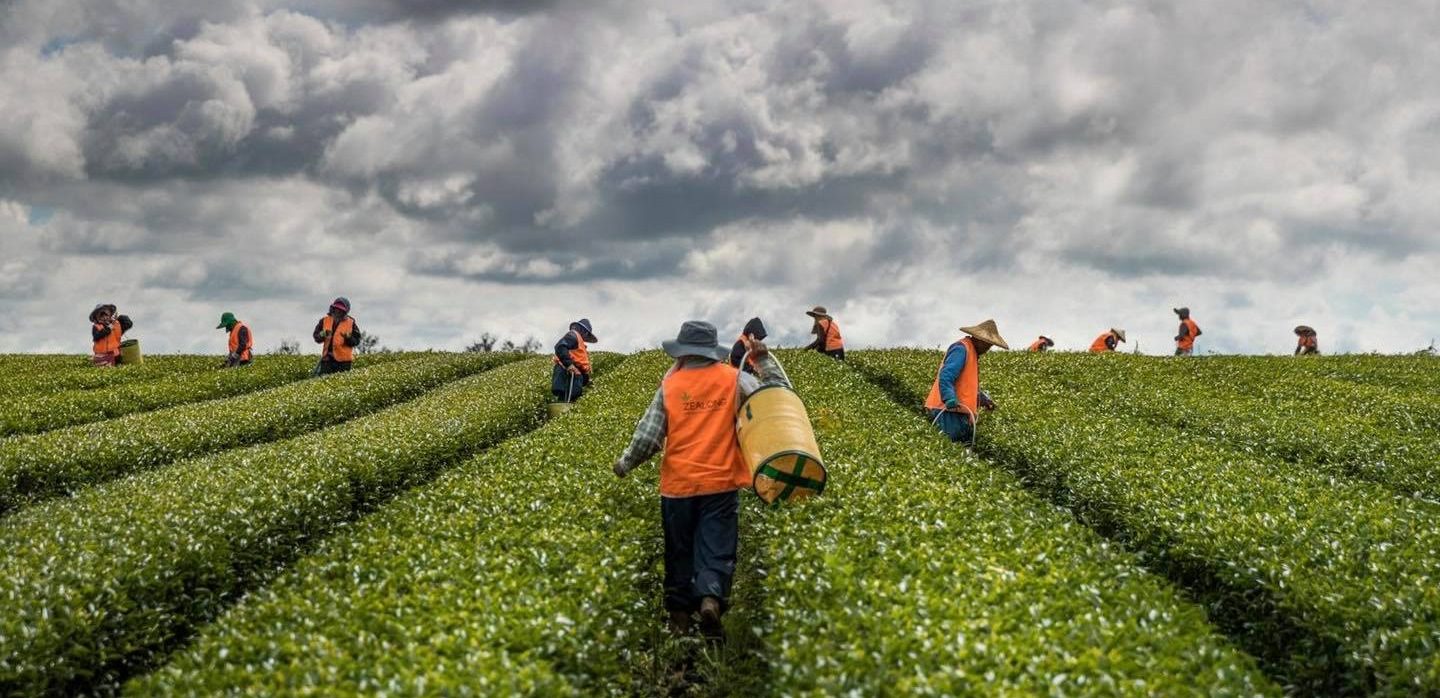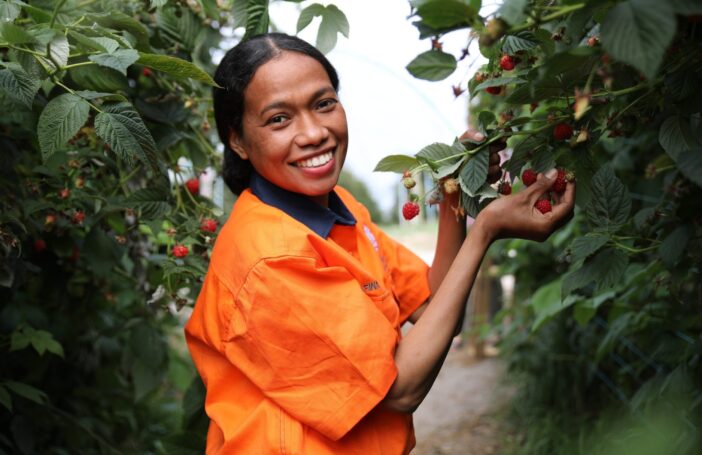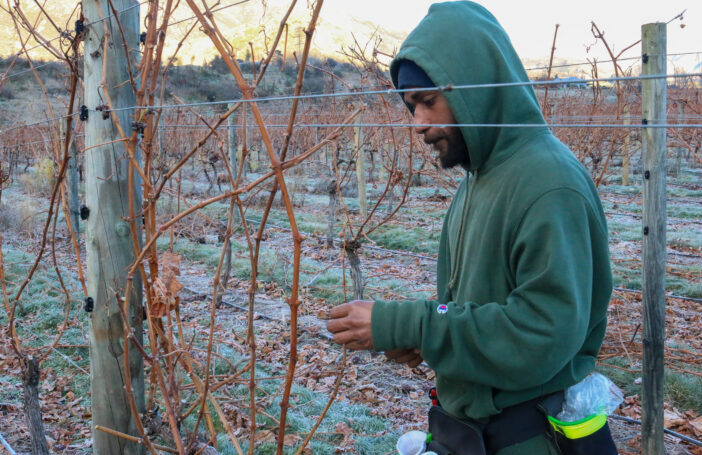During New Zealand’s 2023 election campaign, a pre-election promise made by the National-led coalition, now in government, was to increase the cap on numbers employed under the Recognised Seasonal Employer (RSE) scheme to 38,000 by the end of the decade (up from 19,000 in 2022-23) and, possibly, to open RSE recruitment up to other countries.
The suggestion to expand the RSE scheme — which has had a clear Pacific preference from the outset — to countries beyond the region might seem unexpected. However, the scheme has, in fact, always allowed for the recruitment of a relatively small number of workers from selected Asian countries.
The inclusion of Asian workers in the Pacific-focused RSE scheme is the result of recruitment arrangements which pre-dated its introduction in 2007. At the time, some horticulture and viticulture enterprises that sought RSE accreditation had pre-existing arrangements to recruit migrant labour under other temporary work visas. Small numbers of seasonal workers from six Asian countries — India, Indonesia, Malaysia, the Philippines, Taiwan and Thailand — who happened to be employed in businesses that gained RSE accreditation in 2007-08 and 2008-09 were able to be “grandparented” into the scheme.
In the early years, when the RSE cap was held constant at 8,000 (up from an initial 5,000 places in 2007), workers from Asian source countries accounted for 20-25% of the total RSE workforce. From 2012-13 onwards, when increases in the RSE worker cap became regular events, the number of workers that could be recruited from Asian sources was not permitted to grow, sitting at approximately 1,500 workers in any given year. Consequently, as the RSE cap has increased, the proportion of workers from Asian countries has declined, down to approximately 7% of the total RSE workforce (17,424) in 2023.
Over the RSE scheme’s first 16 years of operation (1 July 2007 – 30 June 2023), 12% (5,773) of the total number of individuals (49,099) who have participated in the RSE scheme have come from the Asian source countries. The largest numbers have been recruited from Thailand (2,452), Malaysia (2,054) and Indonesia (870). Much smaller numbers have participated from the Philippines (161), Taiwan (123) and India (113) over the same period.
The percentage distribution of workers by all Pacific and Asian source countries is shown in Figure 1. Three Pacific source countries have provided 75% of all individuals who have participated in the RSE scheme since its inception: Vanuatu (39%), Samoa (20%) and Tonga (16%). At the other end of the spectrum, three Asian and one Pacific source country each contributed less than 1% of the participants in the scheme to 30 June 2023.

Despite the relatively small number of Asian RSE workers in any given year, the RSE employers who recruit them regard them as an important component of their annual seasonal labour supply. Of the 257 employers that have gained RSE accreditation over the 16 years, 11% (29) have recruited from Asian source countries at some stage. For a small number of those employers, their seasonal workers from Asia were, and remain, their dominant RSE workforce.
RSE employers who recruit from Asia have faced pressure at times over the 16 years to phase out their Asian seasonal workers and replace them with recruits from Pacific countries. Employers have resisted this pressure because they highly value the skills and experience of their Asian recruits. The main recruiters of Asian workers are labour contractors operating in the wine industry, as well as kiwifruit and pipfruit enterprises with large packhouse operations employing men and women for packing work.
Women have accounted for just under one-third (32.7%) of the 5,773 Asian RSE workers recruited between 2007 and 2023; almost three times the share of women (12.2%) recruited from the nine Pacific source countries over the same 16-year period.
Figure 2 shows the percentages of men and women recruited by RSE employers over the 16 years. In two countries – Malaysia and Taiwan – women make up more than 50% of the total number recruited. Kiribati and Tuvalu are the Pacific countries with the highest percentages of women, both with 30%. In these four cases, the employers recruiting them utilise women in their packhouses (Malaysians, I-Kiribati and Tuvaluans), or in specialist roles in the country’s only tea plantation (Taiwanese) or in harvesting berry fruits (I-Kiribati).

On average, Asian workers have tended to return to New Zealand for seasonal work more frequently (3.19 seasons) than those from Pacific countries (2.72 seasons). Although there are some differences by source country as shown in Figure 3.

Four Asian countries have the highest recorded average return rates (all 3.0 seasons and above), with the 161 Filipino recruits standing out with an average of close to six seasons (5.88) — more than double the average for Vanuatu (2.87), the highest ranked Pacific source.
The restriction on the number of workers who can be recruited from Asia likely contributes to the higher incidence of return. With numbers constrained, there are fewer opportunities for seasonal jobs to be distributed to new workers and families. In the case of the 161 Filipino workers, 27% have been employed in New Zealand for 10 or more seasons, highlighting the value placed by those individuals and their families on an employment opportunity that is restricted to very few people.
The number of individuals recruited from Thailand (2,452) and Malaysia (2,054) on the other hand, has been higher. With higher numbers comes the ability to distribute employment opportunities more widely; 60% percent of Malaysian recruits and 46% of Thai recruits have only been to New Zealand for one season. The case of Taiwan seems to be an exception: numbers are low (123) yet 58% of Taiwanese recruits have only worked one season. With no more than 10 Taiwanese RSE workers recruited each year for specialist work as tea-pickers, employment opportunities are perhaps shared within an extended family network.
There will likely be no shortage of demand from RSE employers for increased recruitment from Asia should the National-led coalition government proceed with its pre-election promise to double the cap by the end of the decade. Nonetheless, retaining the scheme’s Pacific preference — a preference that was built into the scheme’s original design — should remain the priority. RSE employers, industry groups and lead government agencies involved in the RSE scheme are no doubt waiting for the government to confirm its RSE-related plans.
Note: Annual RSE arrivals data is published by New Zealand’s Ministry of Business, Innovation and Employment. While arrivals in a given financial year relate to individual people, these data can’t be tallied over time as many RSE workers return to New Zealand repeatedly. However, RSE arrivals can be converted to numbers of individuals. Each RSE worker’s arrival in New Zealand has a unique client code that is included in the records of all their previous and subsequent movements in and out of the country. By matching up an individual’s client code each time they enter the country, their individual movement patterns can be tracked.





I am also doing my own research focus on seasonal workers in Korea. Quite interesting.